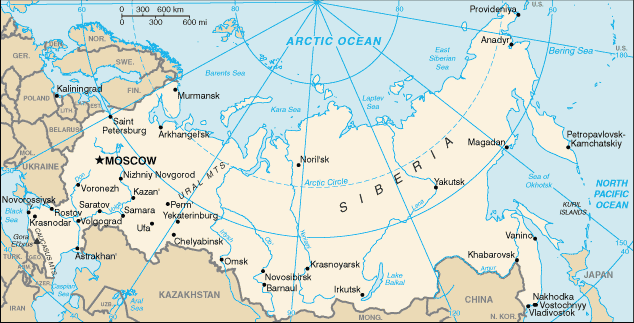In this economic guide to Russia we’ll give you an overview of the Russian economy, including the country’s primary imports and exports of goods and services, as well as their primary destinations.
Contents
Economy of Russia – Overview
Russia’s move toward a centralized state under the leadership of President Vladimir Putin from 2000 onward has seen the country greatly enhance its geopolitical influence and fueled commodity-based economic growth.

General forecasts for Russia’s commodity growth and economic outlook are improving and the commodity-dependent economy is expected to see growth according to World Bank forecasts.
The country’s heavy reliance on commodity exports makes it susceptible to recessionary pressures.
Russia’s GDP
Russia’s GDP is $1.66 trillion, which ranks it as #11 worldwide. Its economy is driven mostly by exports of commodities.
Rises in oil prices will support growth as it is a fundamental aspect of Russia’s economy. The Central Bank of Russia has stated that if oil prices fall below $40 per barrel it would cause GDP to fall by 5%.
Top 5 Russian Commodity Exports
- Crude Petroleum – $134 billion
- Refined Petroleum – $78 billion
- Petroleum Gas – $27 billion
- Coal Briquettes – $19 billion
- Wheat – $11 billion
Russia’s Other Notable Exports
- Semi-Finished Iron – $8.8 billion
- Raw Aluminum – $5.8 billion
- Diamonds – $5 billion
- Sawn Wood – $4.5 billion
- Refined Copper – $4.4 billion
Top 5 Russian Commodity Imports
- Aluminum Oxide – $1.8 billion
- Refined Petroleum – $1.4 billion
- Citrus – $1 billion
- Coated Flat-Rolled Iron – $967 million
- Cheese – $949 million
Russia’s Other Notable Imports
- Cars – $10.1 billion
- Vehicle Parts – $8.3 billion
- Packaged Medicaments – $8 billion
- Broadcasting Equipment – $6.9 billion
- Planes, Helicopters, and/or Spacecraft – $5.4 billion
Details About Russia’s Imports/Exports
Here we provide more analysis of Russia’s trading items.
Oil
Russia is the 2nd largest producer of crude oil (behind Saudi Arabia), and it has an estimated 80 million barrels of proven oil reserves.
Mineral fuels including oil account for over 61.6% of Russia’s total exports, which includes petroleum gas, coal briquettes, coal tar oil, coke, lignite, and petroleum coke.
Iron & Steel
Russia’s exports of iron and steel total around $25 billion annually, which makes the country the 5th largest steel exporter and represents about 5.7% of global steel exports.
According to the United States Geological Survey (USGS), Australia has the most iron ore reserves by some margin, followed by Russia, China and Brazil.
Wheat
Russia is the world’s biggest wheat exporter with 23.8% market share of the $45.1 billion commodity sector. The country has been able to solidify its dominance as a result of reducing crop yields in rival countries like Australia, France, Canada, and the United States.
Corn
Russia is currently ranked 7th in the world for corn exports and ships mainly to Asian destinations like Iran, Turkey, and South Korea.
The country is increasing its corn output and the USDA has predicted that Russia and Ukraine will surpass Argentina and Brazil as major corn exporters by 2022.
Copper
Exports from all categories of copper total $168 billion worldwide of which $6.2 billion came from Russia. The former Soviet country is the 2nd largest exporter of refined copper worldwide after Chile.
Chile dominates this copper sub-sector with 23.2% of market share.
Russia recent scrapped export duties for refined nickel and copper cathode as a condition of its accession to the World Trade Organization.
The leading zinc and copper miner in the country, Ural Mining and Metallurgical Co, sells half of the copper it mines to export markets.
All figures based on OEC/IMF 2018 calculations and projections unless otherwise stated.
Regulated Brokers: Where Can I Trade Commodities?
Start your research with reviews of these regulated brokers available in .
CFDs are complex instruments and come with a high risk of losing money rapidly due to leverage. Between 74%-89% of retail investor accounts lose money when trading CFDs. You should consider whether you can afford to take the high risk of losing your money.
Further Reading
- Commodity.com Guide to Commodity Brokers
- Commodity.com Guide to CFD Brokers
- Guide to Trading Soft Agricultural Commodities
- Guide to Trading Wheat


